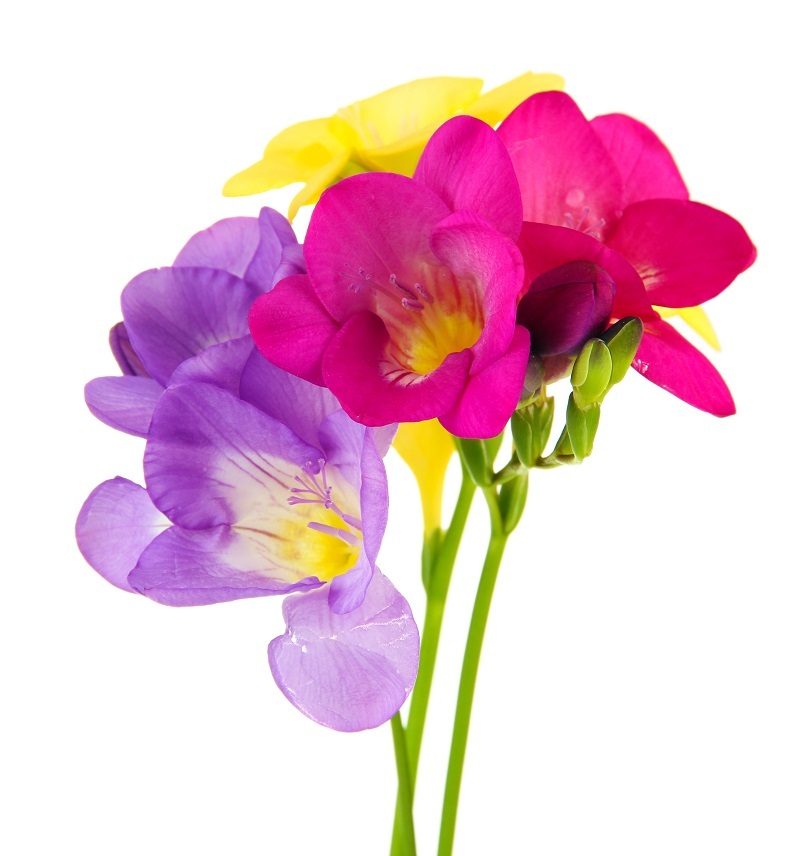Flourishing Orchids: Care Essentials Revealed
Posted on 01/07/2025
Flourishing Orchids: Care Essentials Revealed
Orchids have captivated plant lovers for centuries with their exotic beauty, intricate blooms, and reputation for elegance. While some perceive orchids as finicky and high-maintenance, the truth is that understanding their basic needs can transform anyone into a skilled orchid caretaker. In this detailed guide, we reveal the proven essentials for flourishing orchids, covering every aspect from watering and light to fertilization and repotting. Unlock the secrets to thriving, vibrant orchids that will dazzle as the centerpiece of your indoor garden!
Understanding Orchids: An Introduction
Before diving into orchid care essentials, it's crucial to recognize that orchids are a diverse family of plants with over 25,000 species worldwide. The most commonly grown varieties include:
- Phalaenopsis (Moth Orchid)
- Cattleya
- Dendrobium
- Oncidium
Each orchid type has its unique care requirements, but many share foundational care principles. Focusing on these core factors will set the stage for vibrant, healthy orchids in your home or office.

The Five Pillars of Orchid Care for Flourishing Blooms
To grow and maintain flourishing orchids, pay attention to the following five essential care pillars:
- Light
- Water
- Humidity
- Fertilization
- Potting and Repotting
1. Optimal Light: Shine Brighter
Sunlight is the fuel behind explosive orchid growth. Insufficient light often leads to disappointing blooms, while too much can scorch delicate leaves.
Tip: Most orchids thrive in bright, indirect light. East-facing windows are often ideal.
- Phalaenopsis: Prefers filtered, gentle morning light.
- Cattleya: Enjoys higher light but not direct midday sun.
- Dendrobium and Oncidium: Tolerate slightly brighter conditions.
Warning signs:
- Yellow, limp leaves: Too much light
- Dark green, droopy leaves: Too little light
2. Watering: The Art of Balance
For robust, thriving orchids, proper watering is non-negotiable. Most orchids are epiphytes, meaning they absorb moisture from the air rather than from sitting in wet soil. Overwatering is the fastest way to kill an orchid!
- Water once a week on average, allowing the potting medium to dry out slightly.
- Use lukewarm, distilled, or rainwater - tap water with high mineral content can harm orchid roots.
- Water early in the day so foliage dries by nighttime, reducing the risk of fungal diseases.
- Never let roots sit in water. Ensure pots have adequate drainage.
Pro Tip: Insert a wooden skewer or toothpick into the potting mix; if it comes out damp, hold off on watering.
3. Humidity: Lush, Tropical Vibes
Orchids originate from humid, tropical regions. Maintaining the right humidity (ideally 50-70%) is crucial for lush, vigorous orchids.
How to boost humidity:
- Humidity Trays: Place a tray filled with pebbles and water under the orchid pot.
- Grouping Plants: Cluster multiple houseplants together to create a microclimate.
- Humidifier: Use a small, room-sized humidifier near your orchid display.
- Misting: Lightly mist with room temperature water in the morning; avoid misting late in the day to prevent rot.
4. Fertilization: Feeding for Flourishing Orchids
Contrary to common belief, orchids ARE not heavy feeders. But consistent, balanced nutrition is vital for long-term health and abundant blooms.
Best Practices for Fertilizing Orchids:
- Use a balanced, water-soluble fertilizer (20-20-20) specifically formulated for orchids.
- Dilute the fertilizer to quarter-strength to avoid burning roots.
- Feed every 2-4 weeks during active growth (spring and summer).
- Reduce or withhold feeding during dormant winter months.
- Flush the pot with plain water monthly to prevent salt buildup.
5. Potting Medium and Repotting: Secure the Foundation
Thriving, flourishing orchids need airy roots and a medium that drains quickly. Most use a mixture of bark, perlite, and sphagnum moss. Repot periodically to keep the environment fresh and healthy.
Key Steps for Repotting Orchids:
- Repot every 1-2 years or when the medium decomposes.
- Choose a slightly larger pot with plenty of drainage holes.
- Gently trim dead or rotted roots during repotting.
- Position the orchid at the same depth as before to avoid stem rot.
- After repotting, water sparingly for the first week to reduce stress.
Special Considerations for Orchid Varieties
While these general flourishes apply to most orchids, certain varieties have unique requirements:
- Phalaenopsis: Tolerant and beginner-friendly, prefers warm temperatures and minimal direct light.
- Cattleya: Enjoys a marked day-night temperature difference; allow roots to dry slightly between watering.
- Dendrobium: Many need a winter rest period with less water and no fertilizer to trigger blooming.
- Oncidium: Needs more frequent watering and higher humidity; sensitive to water quality.
Common Orchid Care Mistakes--and How to Avoid Them
Even experienced growers can fall victim to common orchid care mistakes. Here's how to safeguard your flourishing orchids:
- Overwatering: Always let roots dry out before watering again.
- Poor Drainage: Use only pots and mixes designed for orchids.
- Neglecting Light: Monitor the light intensity; supplement with grow lights in dark spaces.
- Fertilizing Too Much: Less is more--err on the side of underfeeding.
- Ignoring Disease or Pests: Regularly inspect leaves and roots for signs of trouble, such as black spots, mushy roots, or sticky residue (indicative of pests).
Advanced Tips for Truly Flourishing Orchid Plants
Want to elevate your flourishing orchid experience? Try these advanced orchid care techniques:
- Air Movement: Provide gentle air circulation using a small fan to mimic natural breezes. This reduces disease risk and strengthens stems.
- Temperature Drops: Expose orchids to a 10-degree Fahrenheit drop at night during the fall to trigger vibrant blooms in some species.
- Bespoke Blooms: Research your orchid's specific species for tailored care regarding light, water, and repotting cycles.
- Flower Spike Care: Once blooms fade, trim the spike an inch above a healthy node to potentially encourage a new set of flowers.
- Record Keeping: Note watering dates, feeding schedules, and bloom cycles to fine-tune your care regimen.
Diagnosing and Solving Orchid Problems
Healthy, blooming orchids signal optimal care, but sometimes problems arise. Learn to identify and fix these typical orchid issues:
Yellow Leaves
- Could signal overwatering, nutrient deficiency, or sunburn. Adjust care routines accordingly.
Root Rot
- Roots appear black and mushy; usually caused by excessive moisture or a dense, decomposed potting medium.
- Repot immediately in fresh orchid mix, trim away damaged roots, and adjust watering schedule.
Pest Infestations
- Mealybugs, scale, and spider mites are common pests; treat with insecticidal soap or rubbing alcohol.
- Isolate infected plants to prevent spreading infestations.

Frequently Asked Questions About Flourishing Orchids
How often should I water my orchid?
Most household orchids thrive on weekly watering, but frequency depends on temperature, light, and the potting mix type. Always check for slightly dry roots before watering.
Why won't my orchid rebloom?
Insufficient light, lack of nighttime temperature drop, or missing rest periods can all stall reblooming. Ensure all care pillars are in balance and be patient--some orchids require months of rest before sending up a flower spike.
Can I use regular potting soil for orchids?
Never use standard soil for orchids. Their roots need air, not soggy conditions. Always use a mix designed specifically for orchids, such as bark and perlite blends.
Should I mist my orchid daily?
Occasional misting can help with humidity, but wet foliage invites disease if done too late in the day. Focus on maintaining consistent ambient humidity instead.
Conclusion: Revel in the Joy of Flourishing Orchids
With these orchid care essentials revealed, both beginners and veteran plant parents can cultivate healthy, vibrant, and flourishing orchid plants that bring life and beauty to any space. Remember, while orchids may seem mysterious, success lies in consistency, observation, and a willingness to adjust your approach as your plant grows. Embrace the challenge, celebrate each new leaf and bloom, and let your orchid's spectacular flowers inspire your indoor gardening journey!
Ready to transform your home with breathtaking blooms? Start your flourishing orchid journey today, and enjoy the rewarding artistry of orchid care for years to come!
Latest Posts
Personalized Flower Bouquets for a Unique Birthday Touch
Peony Flowers and Their Colors: A Symbolic Exploration
Enhance Your Workspace Vibes with Fuss-Free Office Plants







